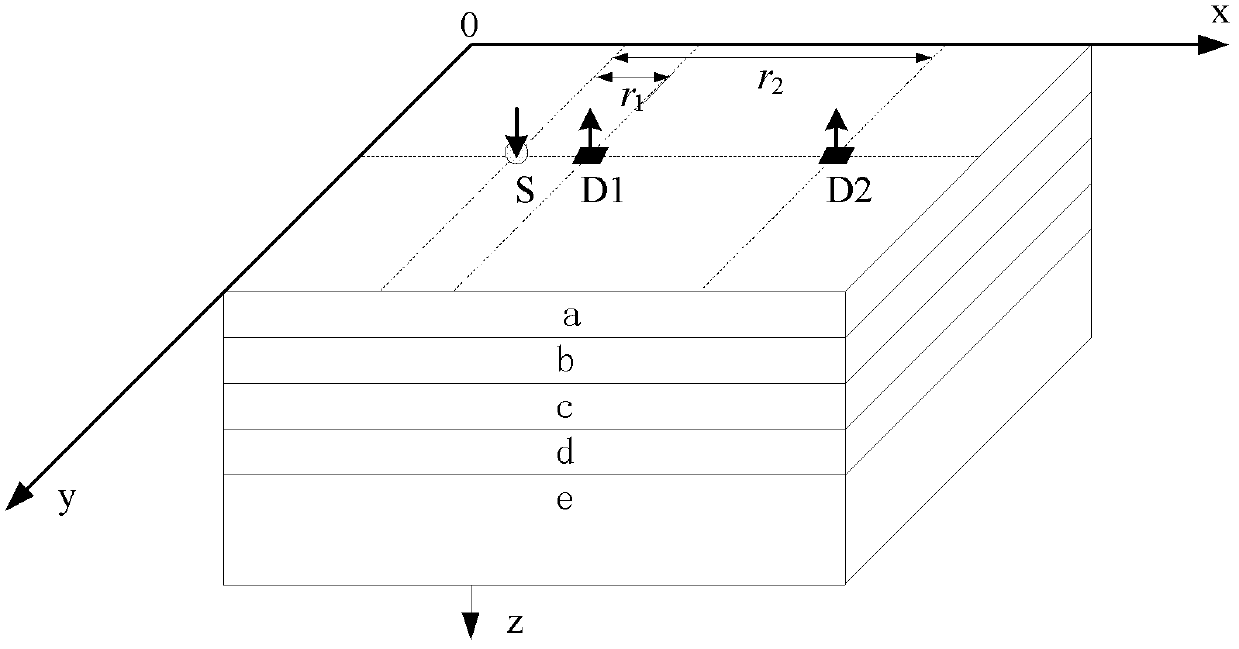Brain function signal extracting method based on empirical mode decomposition optimization algorithm of multi-range measurement method
A technology of empirical mode decomposition and optimization algorithm, which can be used in diagnostic recording/measurement, medical science, sensors, etc., and can solve problems such as difficult detection
- Summary
- Abstract
- Description
- Claims
- Application Information
AI Technical Summary
Problems solved by technology
Method used
Image
Examples
specific Embodiment approach 1
[0031] Specific implementation mode one: the following combination figure 1 Describe this embodiment, the method of this embodiment includes the following steps:
[0032] Step 1. Place a near-infrared probe consisting of a dual-wavelength light source S and detectors D1 and D2 on the surface of the scalp of the brain tissue to be measured, wherein the linear distance between the dual-wavelength light source S and the detector D1 is r 1 , 5mm≤r 1 ≤10mm, used for the hemodynamic changes of the sensitive outer brain tissue; the linear distance between the dual-wavelength light source S and the detector D2 is r 2 , 30mm≤r 2 ≤45mm, can be sensitive to the hemodynamic changes of the cerebral cortex, and record the diffuse reflection light intensity in the quiet state of the brain and the diffuse reflection light intensity of the brain in the evoked excitation through the detector to obtain two different wavelengths λ 1 and lambda 2 Time series of optical density changes at time:...
specific Embodiment approach 2
[0055] Embodiment 2. The difference between this embodiment and Embodiment 1 is that the two wavelengths emitted by the dual-wavelength light source described in step 1 are λ 1 =760nm,λ 2 = 850nm.
specific Embodiment approach 3
[0056] Embodiment 3. The difference between this embodiment and Embodiment 1 is that the distance between the light source S and the detector D1 in step 1 is 10 mm, and the distance between the light source S and the detector D2 is 40 mm.
PUM
 Login to View More
Login to View More Abstract
Description
Claims
Application Information
 Login to View More
Login to View More - R&D
- Intellectual Property
- Life Sciences
- Materials
- Tech Scout
- Unparalleled Data Quality
- Higher Quality Content
- 60% Fewer Hallucinations
Browse by: Latest US Patents, China's latest patents, Technical Efficacy Thesaurus, Application Domain, Technology Topic, Popular Technical Reports.
© 2025 PatSnap. All rights reserved.Legal|Privacy policy|Modern Slavery Act Transparency Statement|Sitemap|About US| Contact US: help@patsnap.com



